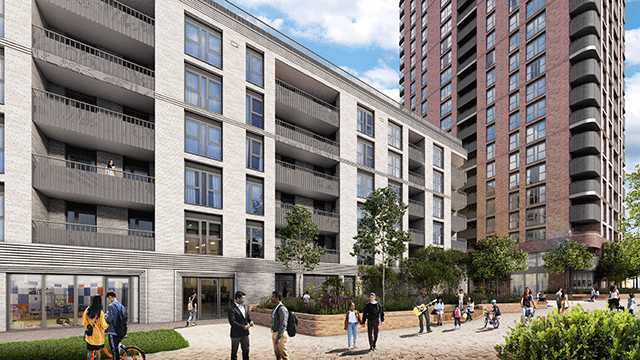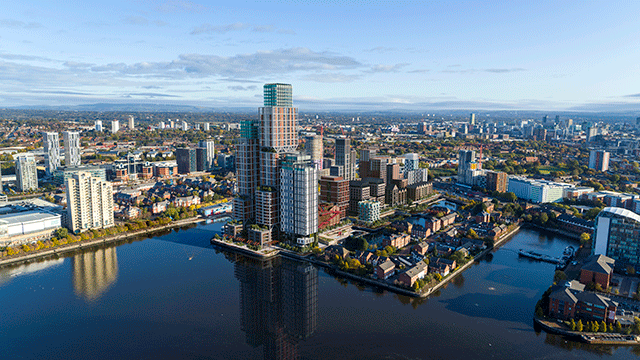Westminster City Council is set to approve a £743m five-year housing investment, following the removal of the Housing Revenue Account cap.
It will use £743.3m from the HRA to fund affordable housing, regeneration and associated debt redemption.
The HRA takes income from tenant rents and sales. Councils can borrow money from this account to develop or regenerate homes.
The government removed a long-standing cap on how much councils can borrow against their HRA in October.
Westminster has 34,000 council homes in the borough generating social rent income.
The plans are the first to be produced since the cap was lifted and will see Westminster boost its five-year spend by £81m. The council has forecast its peak debt will rise by £93m, to £425m, in 2025-26.
Housing and regen priorities
Westminster is confident it can hit its affordable housing target of 1,850 homes by 2022/23. The council has undertaken a review of all development schemes and has said it is on track to deliver 2,263 homes by this time.
Council documents outline proposed spending of £198.2m on major works, £342.8m on regeneration and £202.3m on other development.
The majority of the regen uplift will go to delivering the Ebury Bridge estate regeneration (pictured), which the council has opted to deliver itself “following lessons learned during the Luton Street regeneration”. This was the first phase of the Church Street regeneration: Westminster refused to hold a residents ballot last year and lost £23.5m in funding for the site. An additional £79.6m in finance has been proposed for this site, bringing the five-year spend to £136.6m.
The uplift is tied to increased costs as Westminster takes delivery of the estate regeneration in-house and seeks to buy back social units. Westminster has proposed switching homes from sale to rental tenure at a range of price points. The new budget has seen £28m shifted away from the Church Street development.
Budget crunches
Neither scheme will benefit from GLA finance and Westminster has confirmed it does not receive these funds from the mayor’s office, but welcomed the HRA cap lift in lieu of this.
In its investment strategy, the council said: “This plan has been developed at a time of increasing construction costs and a challenging residential market.” It noted “uncertainty” of housing grants after 2019-20.
Westminster pointed to “pressure” in housing delivery, following a cut of £10m from the Ministry of Housing, Communities and Local Government new homes bonus grant, designed to encourage local authorities to build council homes.
This year the grant was cut by £514,000. Westminster said this “represents a pressure”.
The council has forecast £7m of grant funding over five years, but adds: “There have been indications that from 2020-21 the funding for this grant and payments to authorities will reduce further and possibly cease altogether.”
To finance the HRA programme, it therefore relies on council home capital receipts from right-to-buy sales and rents (£301m), alongside the affordable housing fund from private developer section 106 funding contributions (£185m), with finance from the major repairs reserve (£117m) and additional borrowing (£92m).
A spokesman for Westminster City Council said: “Our investment strategy is designed to maintain our own stock in the best possible condition while also maximising the use of our own land and resources to provide affordable housing within the city.
“The council remains in close discussions with both the GLA and MHCLG on grant funding… We utilise all the council’s accounts as well as our borrowing ability to deliver the City for All agenda.”
Councillors at the cabinet meeting of 25 February gave their backing to the new housing investment strategy. It will now go to the council meeting on 6 March for final approval.
The Housing Revenue Account debt cap
Theresa May announced the scrapping of council borrowing caps at the Conservative Party conference in October, removing the limit on how much local authorities can borrow against their Housing Revenue Account assets.
The HRA borrowing caps were introduced in 2012 for all stock-retaining councils. For years, MPs, housing associations, councils and even the Commission for the Protection of Rural England (CPRE) had campaigned for the removal of this limit, to enable increased council housebuilding.
The government made small increases, giving local authorities the chance to bid for additional borrowing capacity. A 2017 promise to provide an extra £1bn in borrowing was significantly oversubscribed.
In the Budget, chancellor Philip Hammond confirmed the release of the debt cap to facilitate the delivery of an additional 10,000 homes a year.
Savills estimated that local authorities could release £10-15bn of extra borrowing in total, capable of delivering around 100,000 new homes over time.
The release of the debt cap has been touted by communities secretary James Brokenshire as fuel for local authorities to increase their affordable homes stock, though he has acknowledged that councils need additional support in delivering this.
To send feedback, e-mail emma.rosser@egi.co.uk or tweet @EmmaARosser or @estatesgazette











